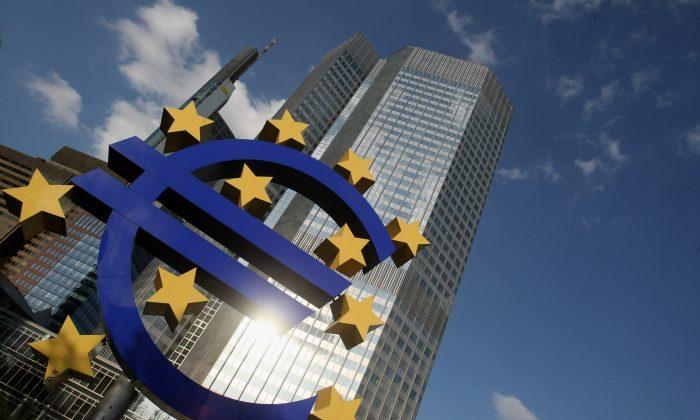In the old days, having a strong currency was a source of pride for a nation. This principle has long changed as central banks compete to lower the relative value of their currencies in a race to the bottom.
The loser so far is the European Central Bank. Since the worst of the euro crisis was over in 2012, the euro has been trading above $1.35 for most of the past two years. As a reminder, this is not too far off the all-time high of $1.58 reached in 2008. It has also risen against other competitors like the yen and the pound, as well as the yuan, which is tied to the dollar.
Why competitors? Because central bankers think they can boost economic activity by weakening their currencies and boosting exports. This strategy has some short-term benefits for some sectors of the economy. Long term it seldom works out, as consumers and savers lose out because of higher inflation and higher import costs. Margins get squeezed and real economic activity actually declines. Abenomics is a testimony to this, as the recent 4.6 percent crash of household spending in Japan demonstrates.
Nonetheless, the ECB is hell-bent on competing in this race to the bottom as it has been sitting back quietly watching the Fed, the PBOC, and the BOJ print their ways into oblivion. Not even the epic 1 trillion euro Long Term Refinancing Operation (LTRO) was really printing money because these loans to banks have to be repaid starting at the end of this year.
So what can the ECB do at their June 5 meeting to push the value of the euro lower and give a boost to exports? ECB President Mario Draghi already went for the low-hanging fruit and talked the euro lower by about 4 cents in the past months. Now the question is whether he will deliver some easing.
Official inflation numbers remain low, but each option on the table would not really boost economic activity and could cause unintended consequences.
Another cut in the main refinancing rate (now 0.25 percent) will do nothing to get banks to lend, especially in the periphery. Throughout the easing cycle, loans to the private sector have actually contracted at a rate of 2 percent annually for the whole of the eurozone over the last year.
Banks cannot and will not lend to weaker borrowers in the periphery because European banks are among the most over-levered in the world and have recently spent more money on their legal departments than on business expansion. Likewise, a cut in the minimum reserve requirement allows banks to lend more and lever up, but they will respectfully decline that opportunity.
More LTRO in the form of billions of dollars of longer-term loans eases bank’s financing stress, but again doesn’t feed through to the private sector.
The most interesting and most anticipated move is a cut in the interest rate banks get for depositing money at the ECB. As of this moment, the rate is 0 percent. Conventional wisdom suggests banks would withdraw their money from the ECB and lend it out if the rate was negative. This argument, however, completely ignores the principle of double-entry bookkeeping.
By definition, the assets and liabilities on the ECB’s balance sheet have to match. So unless the ECB choses to drain liquidity and shrinks the size of its balance sheet, the deposit facility has the same size, regardless at which rate. Consequently the amount of lending to the private sector will stay the same.
However the lending rate to private borrowers might go down a bit, as banks scramble for low-risk investments to escape the ECB penalty rate on deposits. Be that as it may, because of the ruthless laws of double-entry bookkeeping, somebody has to pay. It is going to be the most risk-averse and prudent banks in the eurozone.






Friends Read Free